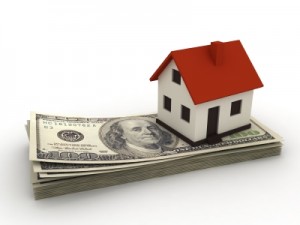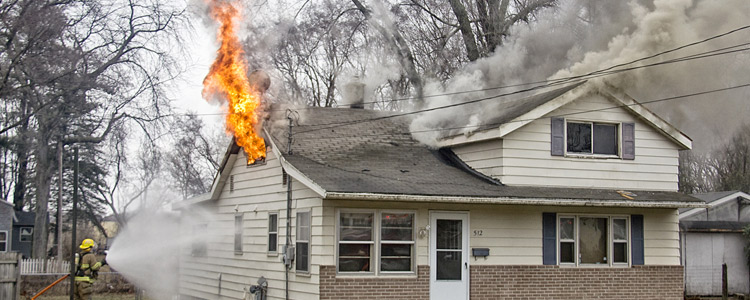In this episode of the Real Life Mortgage Solutions podcast, Len Lane delves into the critical yet often overlooked process of mortgage renewals. With a staggering statistic that 85% of Canadians auto-renew their mortgages without exploring better options, Len breaks down the implications of this decision and why it’s crucial for individuals to reassess their mortgage terms. He highlights the significant impact of recent economic shifts, such as the Bank of Canada rate increases, on mortgage rates and renewals. Len explains the differences between variable-rate and adjustable-rate mortgages and how each type may affect renewal options and payments.
Furthermore, he discusses the recent regulatory changes affecting insured and uninsured mortgages and offers insights into predicting future mortgage rates. Finally, Len provides actionable steps for preparing for mortgage renewals, emphasizing the importance of staying informed and proactive in securing the best mortgage terms.
—
Contact Len Lane | Brokers for Life:
- BrokersForLife.ca
- Linkedin: Len Lane
- LinkedIn: Brokers for Life
- Facebook: Brokers for Life
- X: @Brokers4Life
Welcome. My name is Len Lane, and I am the founder and president of Brokers for Life Inc, and we are Dominion Lending Centres in Western Canada. The topic of our podcast will be about what we consider to be real-life Mortgage Solutions.
Len Lane 00:18
Today, we’re gonna talk about mortgage renewals. Here’s the bad news, 85% of Canadians will auto-renew their mortgage, and never check to see if there’s a better option for their payments or their interest rate. We accept what the bank sends to us and consider that to be their option. The options are only ever going to be in their favour and not yours. There’s a stat that says 6% of mortgages are up for renewal over the next three years. It’s not a number that should impress anyone really, given that Canadians prefer the five-year term over any other term, and in any five-year stretch, three years of mortgages would be 60%, regardless. The number that is impressive, though, is that there are close to $900 billion of mortgages that are coming up for renewal in the next three years. That’s almost a trillion dollars in mortgages, some of them are going to see increases of up to 3 or 4%, because of the low rates that we had during the pandemic. Those rates are also now being affected by the Bank of Canada increase. So, variable rates and adjustable rates mortgages are going to be higher than fixed rates and that has only happened four times in 40 years and this time is becoming the longest stretch in mortgage history. This is going to affect the mortgage renewals and here’s why.
Len Lane 01:40
The bond market, also affected by the increase in the Bank of Canada, responds to the one to five-year fixed-rate mortgages, are part of that bond market. Five-year bonds this morning are at 3.5%. Mortgage rates on a five-year fixed or just under 5%. Well, that also happened is that the one to four-year rates are higher than the five-year rate, which is caused by the inverted bond yield, which I’m sure you’ve heard of. The one-year rate this morning is almost 7%. Variable and adjustable rates are tied to the Bank of Canada rate, which in turn is tied to prime. Prime is 7.2% and even with a discount of 1.25, which was available for some time for insured mortgages, you’re still at 5.95%. What the lenders are offering uninsured is prime minus .9 or 6.3. So, there’s a risk that if you’re taking a variable on your renewal that it could be considerably higher than the fixed rates for quite some time to come.
Len Lane 02:39
Let’s go back and talk about variable-rate mortgages, a common term used to describe two types of mortgages, which are quite different. Variable-rate mortgages, the payments stayed the same throughout the rate increases. What happened is how much you’re paying to your principal, and what has been actually applied to your interest each month. As rates increased because of the mortgage, they saw equity decrease in their amortizations increase as they paid down less principal. This, of course, was the favourite mortgage of rental properties and as part of the increase in rental rates, sooner or later, the bank is going to say to them, increase your payment or make a lump sum to bring the amortization back in line. Most people would take increase the payment because they don’t have the money to make a lump sum. Adjustable Rate Mortgages, on the other hand, saw their rates increase and the payments increase as the Bank of Canada increased with it, right, they did not lose any amortization in their mortgage, their payments went up, and their payments will come back down as the Bank of Canada finally gets round to lowering the rates. So, what does it mean for renewals? If you have a variable rate mortgage, you may not be able to switch it or move it to another lender, there’s a good chance that because your amortization is so out of whack, that you will have no choice but to resign with your existing lenders. Adjustable rates, on the other hand, will have that option to change to a fixed rate, or if they’re insured, accept the prime minus .9% discount and wait out the rest of the changes in the Bank of Canada.
Len Lane 04:09
So, what is good news, there is good news for insured mortgages as well. Those who put less than 20% down five years ago, now re-qualify without using the stress test. The stress test is basically taking the mortgage rate in use, say it’s 5% and add 2% to that to make sure that the debt servicing doesn’t exceed the insurance guidelines of 44% and 39 gross. That’s another conversation as well. It will give a lot of first-time buyers an option to move into mortgages and not be trapped with their present lender. Uninsured mortgages, on the other hand, were dealt a blow by OSPI in March, and the Competition Bureau said it was not fair that uninsured mortgage holders still had to qualify at that stress test that renewal OSFI said that’s too bad and did not change the rule for are uninsured mortgages, which are carried on the bank’s balance sheets. If you refinanced or have a rental property, they are uninsured mortgages. Just to confuse the matter more, if you have a mortgage with more than 20% equity, and you can qualify at the insurable mortgage rate, ie the stress test, you can get that lower rate on that mortgage. There’s a whole nother conversation we’ll have Sunday about insured, insurable, and uninsurable mortgages, but that’s not for today.
Len Lane 05:29
Do you have a property that was bought as a principal residence but then turned into a rental? Was that bought with less than 20% down and insured? We have lenders who will accept that as an insured mortgage and allow us to switch them to the portfolio at insured rates. Predictions for the next five years, show uninsured rates staying above or near the 4.5% range. So, that means that the insured rates are about .4% lower usually. So, we’ll be just above 4% foreseeably, right till the end of this decade. So, there’s a long stretch ahead of us. Of course, you got to remember but these are predictions by economist who are right about 50% of the time, kinda like the weathermen of finance. What are the steps to get ready for your mortgage renewing, possibly changing lenders, we’ve made it easy for you. You get a copy of the final payout, 120 days before the renewal date, so we can lock in rates. Our lenders will honour rate drops if they go down in that 120-day period. Lenders are sending these notices out at different times now to try to maximize their rates, in their favour. The lenders we are using for renewals will automatically allow us to float down the rates to right up until your renewal.
Len Lane 06:48
A copy of the property taxes. Make sure that they’re up to date, if you don’t have a copy of can maybe get them for you from a city or municipality that you live in. Bigger cities, a lot easier to do, smaller communities or municipalities, sometimes a little harder, but you will need a copy of that. Copy of your home insurance to show it is current and then if it does expire before the renewal date, you’ll just need a binder letter from your insurer. You’ll need a letter of employment and the last 30 days, a current pay stub and at least or at least the last one for 2023 or your T4, just to show what last year’s income was. Fill out our secure online application, on the website so that you have updated information. Go to brokers for life.ca, the bottom of the page, there’s a long-form then wait for my team to work their magic and find the best trade options for your current situation. Happy renewing everybody.
Len Lane 07:43
Thanks for listening today. I hope you found the information that we provided to be useful in your mortgage journey. And remember, you can always find our associates at www.brokers forlife.ca/associates. Have a great day.






